This post may contain affiliate links. See my disclosure policy.
This high protein mac and cheese needs just 6 main ingredients to make and yields the most creamy and dreamy mac ever. I love how it tastes like the real thing.
Looking for more high-protein main dishes? Try protein pizza, protein pasta, and cloud bread pizza.
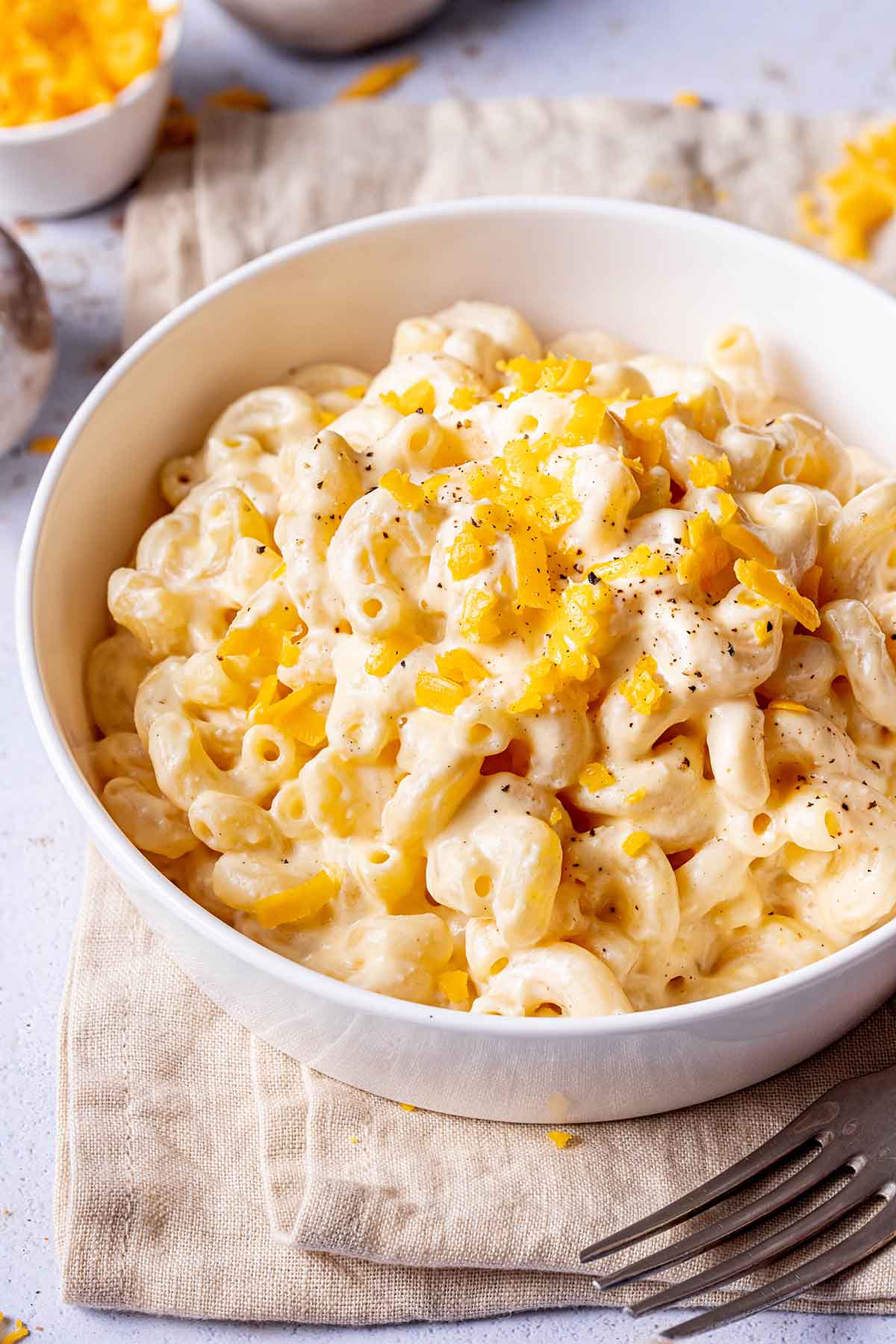
Growing up, mac and cheese was a childhood staple, but my mom would always pair it with chicken or fish so we’d have a complete meal. I wondered, though, what if I could add protein to the mac and cheese without sacrificing the flavor or texture? Well, thanks to my newfound obsession with cottage cheese, I’ve found a solution. And I promise you, you won’t even know this is good for you!
Table of Contents
Why I love this recipe
- 30+ grams of protein per serving. And it’s all in the sauce! But I’m giving you the option to use protein pasta to make it even higher.
- Tastes like the real thing. I’m a mac and cheese snob, so to even share this recipe, it had to be as legit as possible.
- Quick and easy. This is the kind of meal you can put together on a busy weeknight when you can’t be bothered cooking!
- Healthy. The pasta provides healthy carbs and fiber, and the sauce provides protein and some fat. I’ve included some pairing suggestions below to round it out.
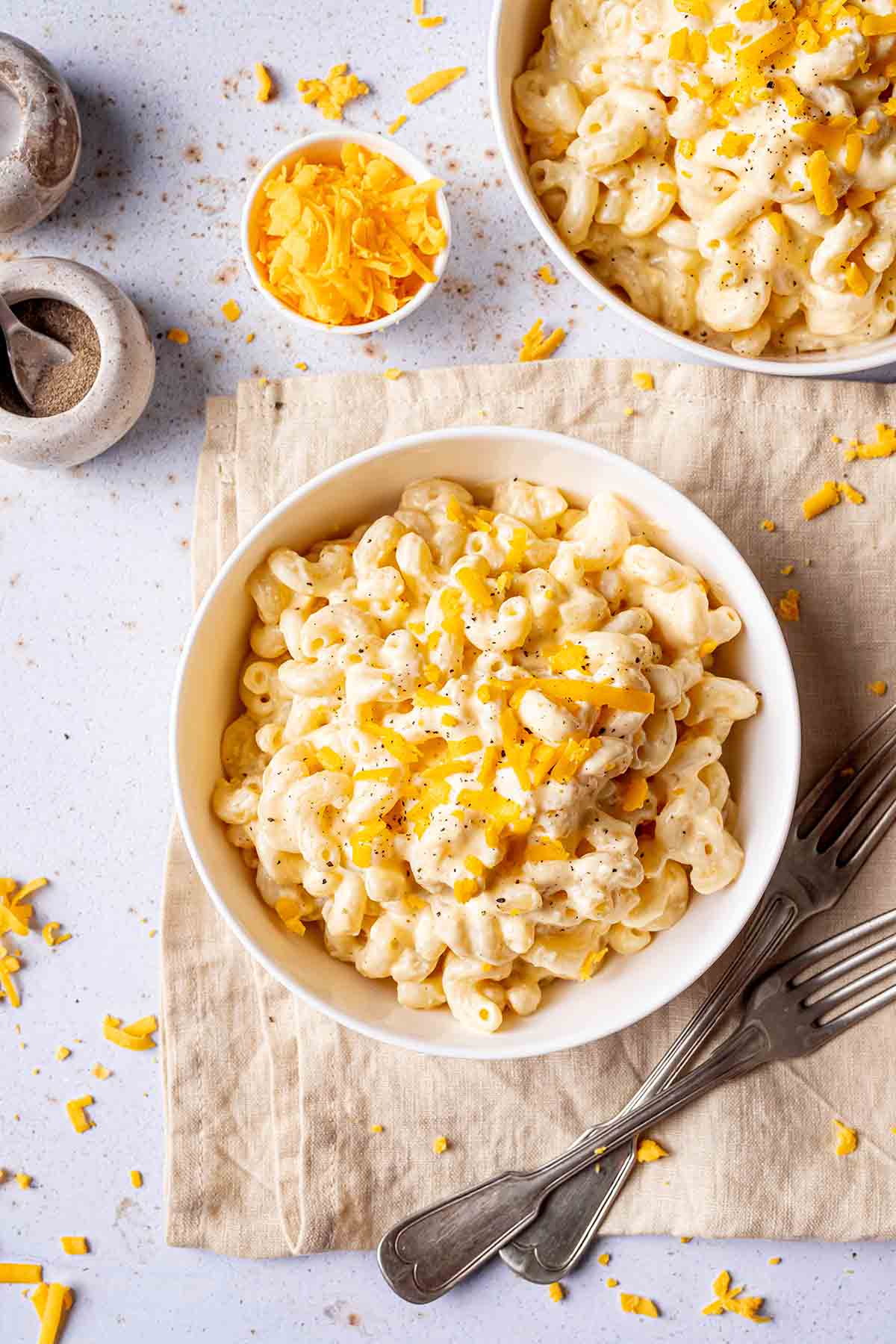
Ingredients needed
- Pasta. I like to keep things classic and use the OG elbow macaroni (which also holds onto the creamy sauce SO well), but penne, rigatoni, and even spaghetti are all fine. If you want even more protein, I like to use Barilla Protein Plus Elbow Pasta (affiliate link) which doesn’t taste rubbery, cooks easily, and also adds 17 grams of protein per serve.
- Non-fat milk. I opted for cow’s milk, but feel free to use almond milk, coconut milk, soy milk, etc. Just don’t use oat milk because it’s naturally sweet.
- Cottage cheese. The secret ingredient that gives this mac and cheese a HUGE protein boost AND also tons of creaminess. I like to use non-fat cottage cheese as you save a few extra calories, and you already get some fats in the cheddar cheese.
- Protein powder. Optional but unflavored protein powder adds even more protein without affecting the flavor or texture.
- Cheddar cheese. If you can, shred the cheese by hand because it melts so much better and honestly tastes better too.
- Cornstarch. Adding a pinch of this ensures the sauce sticks to every single piece of pasta.
- Salt and pepper. To taste. Only add this at the end, in case its already salted enough.
How to make protein mac and cheese
I’ve included step-by-step photos below to make this recipe easy to follow at home. For the full printable recipe instructions and ingredient quantities, scroll to the recipe card at the bottom of this post.
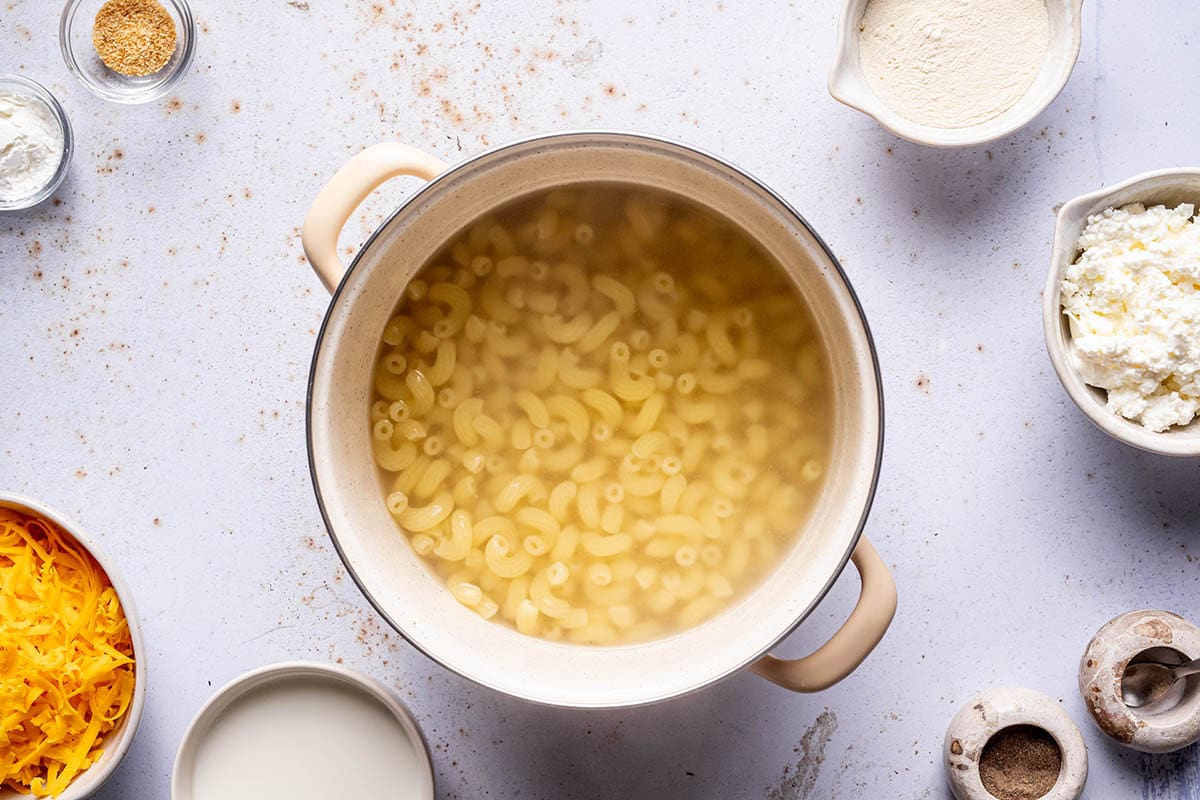
Step 1- Boil pasta. As per the package instructions.
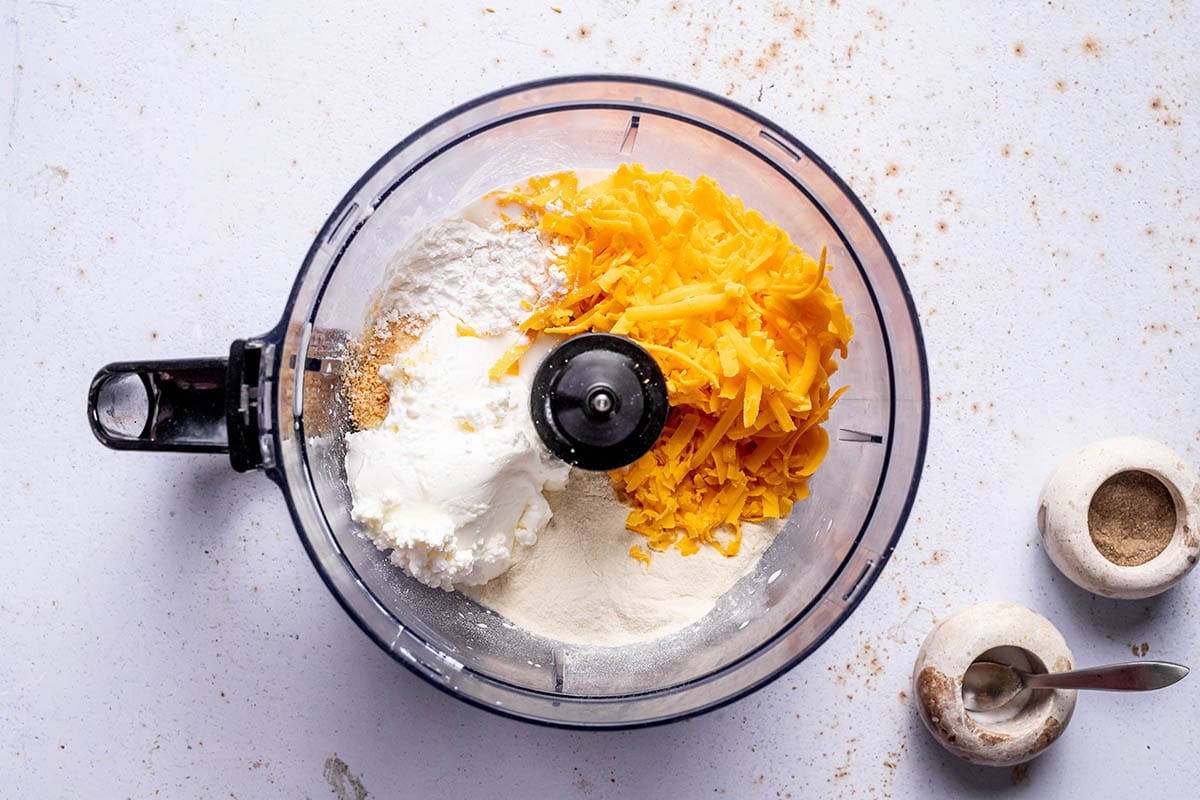
Step 2- Make the sauce. Blend together the cottage cheese, milk, cheddar cheese, optional protein powder, and cornstarch.
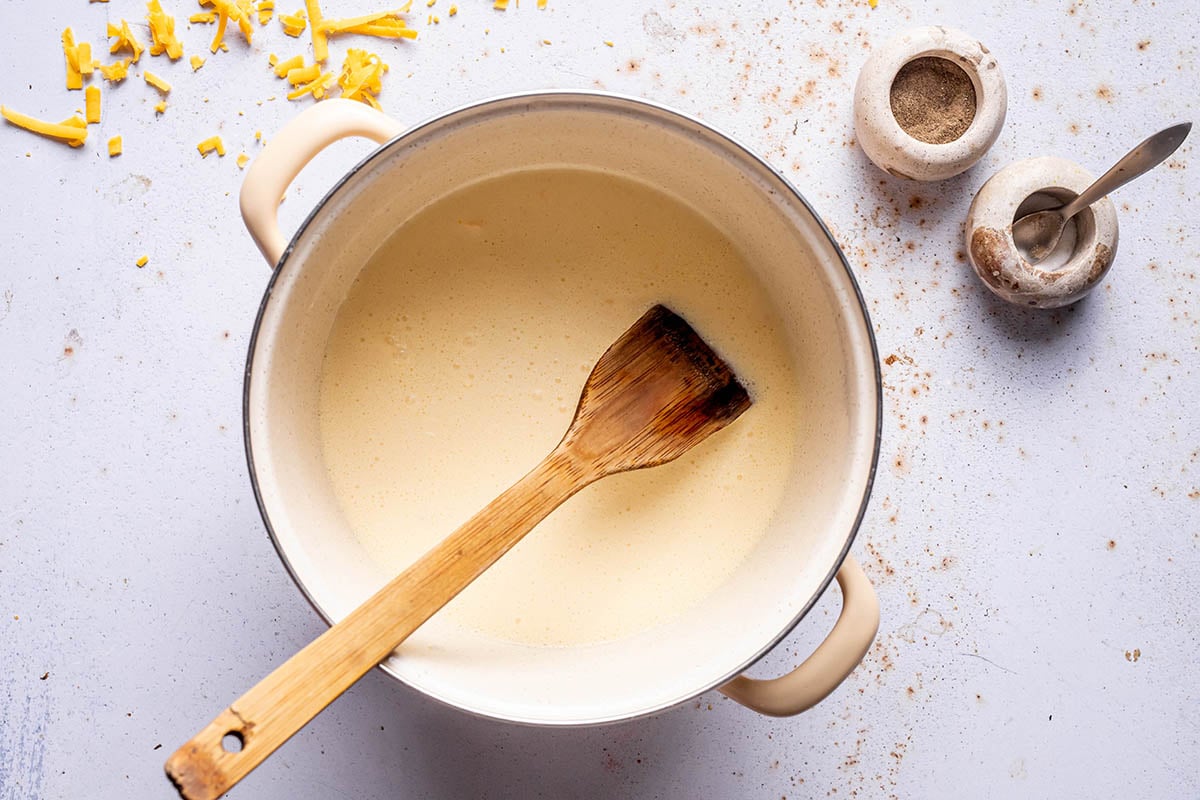
Step 3- Warm up. Add the sauce to a pot and bring it to a simmer, stirring regularly.
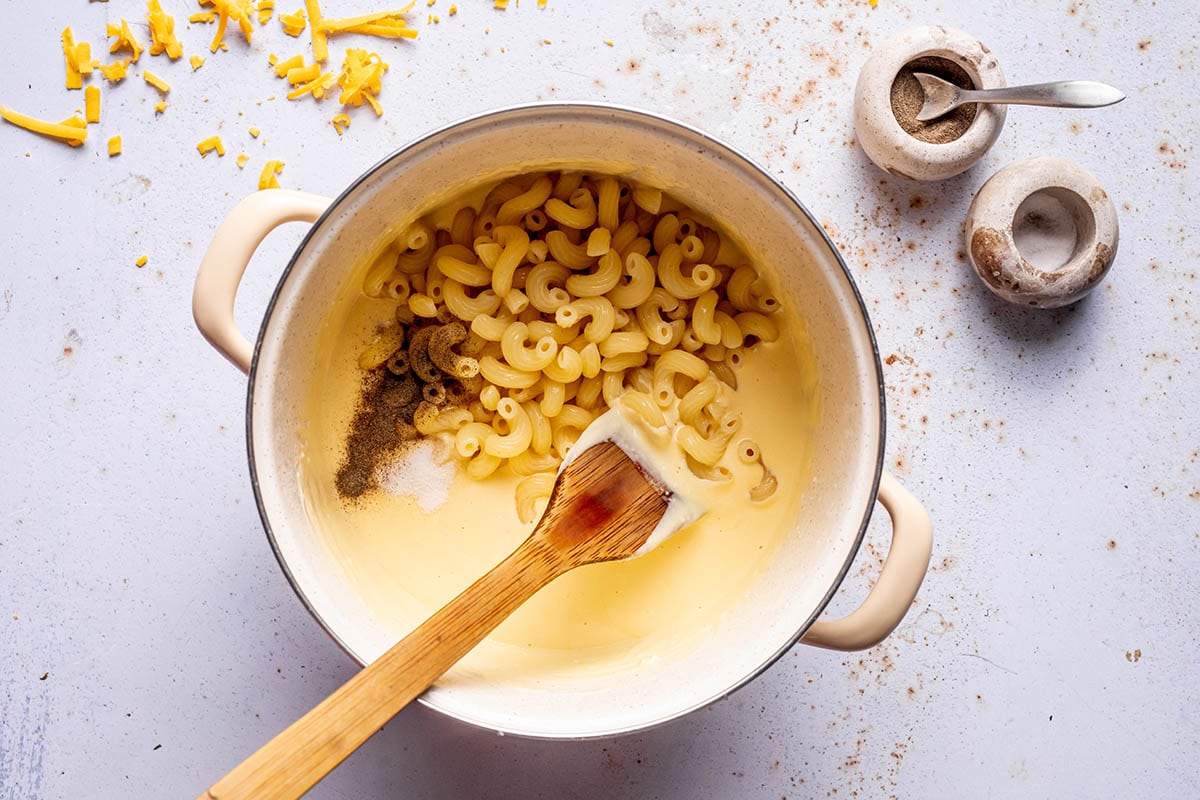
Step 4- Combine. Add the pasta back in and mix everything together. If using protein powder, stir it through. Adjust the liquid, season, and serve.
What to serve with it
Because of the high protein content, this mac and cheese is a meal in itself.
When it comes to pairings for this classic dish, I recommend some form of steak and vegetables. Try any of these!
Arman’s recipe tips
- Taste the sauce. As mentioned in the ingredient section, don’t add the salt (and pepper) until you’ve tasted the sauce. Cottage cheese is naturally super salty, so you may not even need to add it (I didn’t add it in one of my test batches because of a particular brand).
- Add flavor boosters. I purposely kept the recipe as classic tasting as possible, but to amp up the flavor, add garlic salt, onion powder, Italian seasoning, curry powder, or even some red pepper flakes.
- Amp up the protein. Some of my favorite proteins to add to mac and cheese include sliced or shredded chicken breast (rotisserie chicken works a treat!), shrimp, or even some crumbled tofu.
- Add veggies! This was my parents’ sneaky trick growing up. Toss in some steamed broccoli, baby spinach, frozen peas, and corn, or even some cauliflower rice.
Storage instructions
To store: Leftovers are best stored in an airtight container in the fridge. It will keep well for up to five days.
To freeze: Place portions of the mac and cheese in a shallow container and store in the freezer for up to 6 months.
To make ahead: I’ve often made the sauce in advance and kept portions in the freezer. When ready to use, just thaw in the fridge overnight.
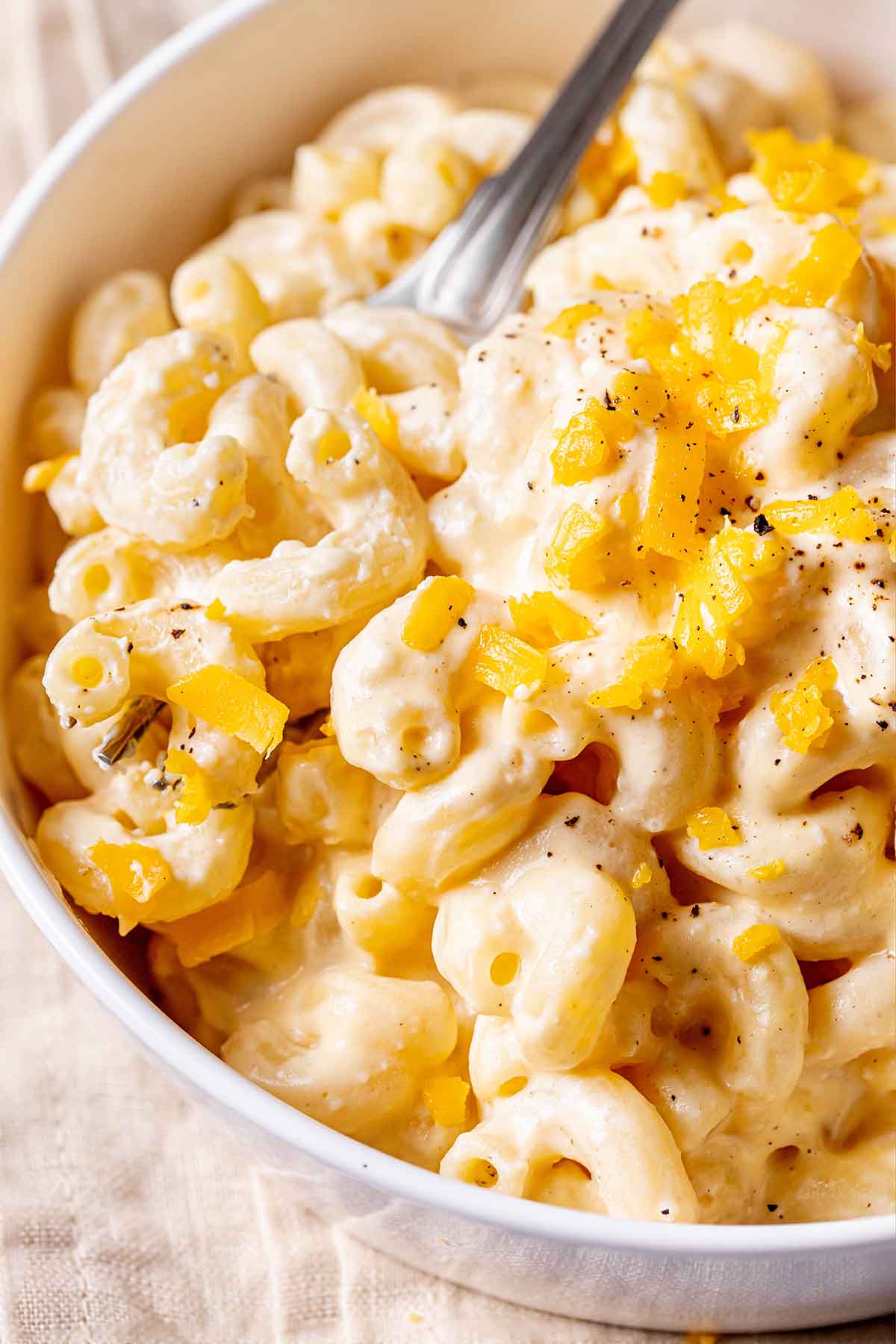
Frequently asked questions
Yes, but you’ll need to make a batch of my dairy-free cottage cheese for the sauce. The only other changes are to use dairy-free milk and dairy-free shredded cheese.
More healthy dinners to try
- Eggplant rollatini
- Cottage cheese lasagna
- Tuscan white bean soup
- Cauliflower steak
- Cottage cheese alfredo
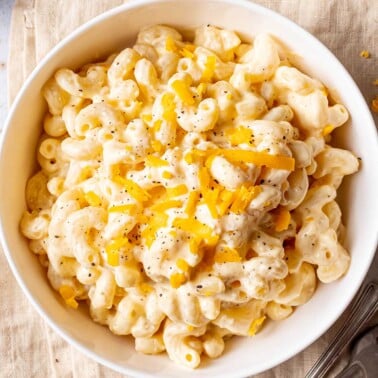
Protein Mac And Cheese
Video
Ingredients
- 12 ounces elbow macaroni
- 1 cup cottage cheese
- 1 1/2 cups shredded cheddar cheese
- 1/2 cup protein powder unflavored, optional
- 1 cup milk I used non-fat milk
- 1 tablespoon cornstarch
- 1/2 teaspoon salt
- 1/2 teaspoon pepper
Instructions
- Cook the elbow macaroni as per package instructions. Set aside.
- In a high speed blender, combine the cottage cheese, shredded cheese, milk, protein powder, and cornstarch and blend until smooth.
- Add the sauce to a saucepan over medium heat. Bring to a boil. Once it begins to simmer, slowly stir the sauce until it thickens.
- Add the pasta back into the sauce until coated. Serve immediately.














I made this last week and holy smokes!! I’m making a double batch this week! I made it last week without the protein powder, but I’m buying it and adding it this week for the extra protein. So excited. Thank you SO much, Arman!!
I truly cannot believe how good this recipe tastes, especially for how simple and healthy it is! So may of your recipes are so incredibly helpful, Arman. Thank you so much!!